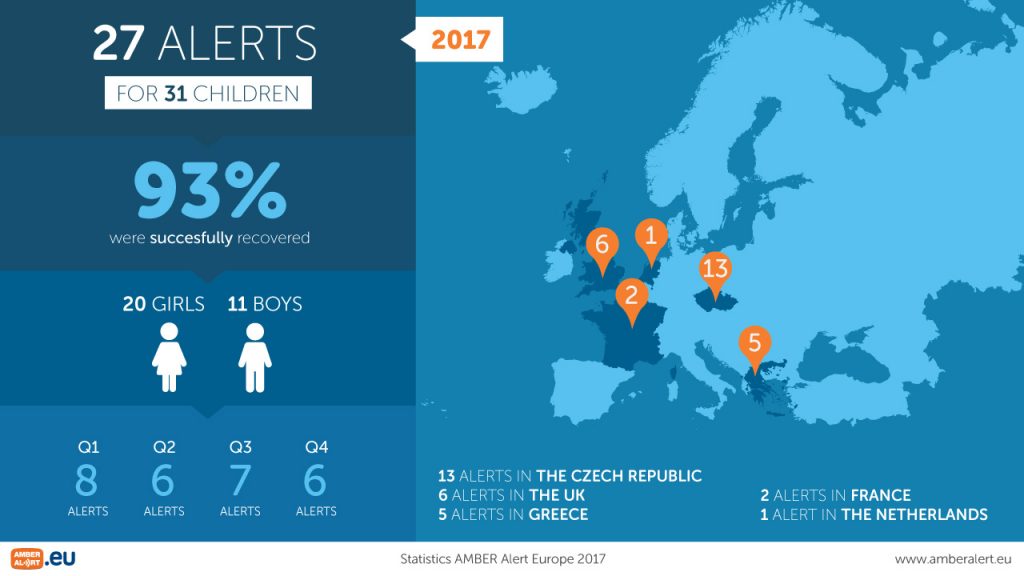In 2017, competent law enforcement issued 27 AMBER Alerts for 31 missing children across Europe. In 93 percent of these cases, the children were safely recovered. In the Netherlands, for example, a 15-year-old deaf and autistic boy was found after the issuance of an AMBER Alert. In the Czech Republic, a national child alert even ended a 2-month-long search for a 2-year-old girl abducted by her mother.
While many more children go missing in Europe, AMBER Alerts are only used in the most urgent cases. Police issue a national AMBER Alert when they believe a missing or abducted child’s life is in imminent danger and the public can help in the search for the child.
In the Netherlands, informing the public resulted in the successful recovery of a deaf and autistic boy. The teenager left his home during extreme weather conditions in December. Because police feared for his life, an AMBER Alert was issued. More than 12 million Dutch citizens were on the lookout for the boy. This led to a crucial tip, which helped reunite the teenager with his family.
In September, police authorities from the Czech Republic, in turn, sent out an AMBER Alert for a 2-year-old girl that had been missing for two months. By involving citizens in the search, police were hoping to find the toddler. The mother, who had abducted the girl, saw the alert and decided to turn herself in. Her child was found in good health.
Risk triage for missing children
In order for tools such as an AMBER Alert to be effective, risk triage is crucial. When a child goes missing, every minute counts. Law enforcement experts should quickly and carefully assess the risk to the child’s life. A timely risk assessment, modelled on medical risk triage, for missing children can significantly increase the chances of these children being found alive and well.

